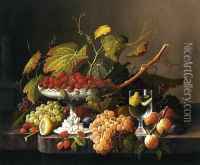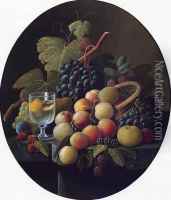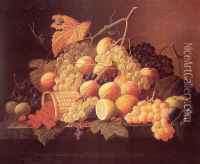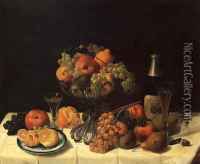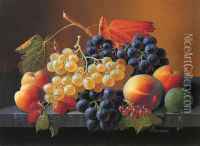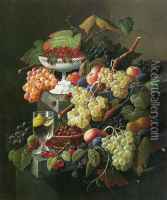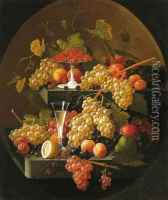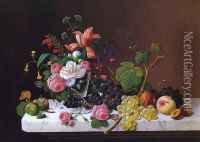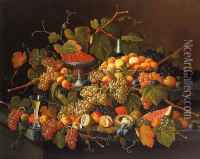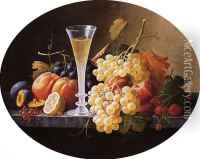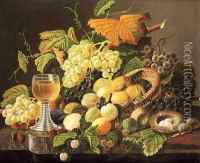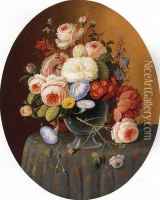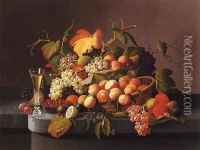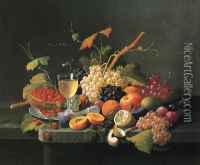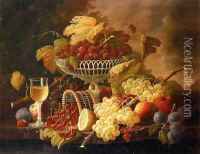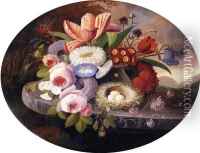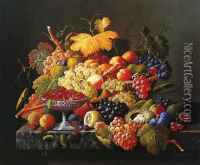Severin Roesen Paintings
Severin Roesen was a still-life painter known for his lush and elaborate fruit and flower compositions that reflect an opulent era in America's history. His birth date is not documented precisely but is estimated to be around 1815, and he was born in Boppard-am-Rhein, Prussia, which is today's Germany. Little is known about his early life and training in Europe before he emigrated to the United States.
Roesen's career in America began in the early 1840s, and by 1848 he had settled in New York City. He found success in the thriving art market there, as the expanding middle and upper classes of America had developed a taste for still-life paintings, which were considered suitable for moral and aesthetic improvement.
His works are characterized by their vivid realism and intricate detail, often featuring an abundance of ripe fruits, flowers in full bloom, and occasionally wine glasses, which symbolize the senses and the ephemeral nature of life. Roesen's paintings celebrate the fertility and abundance of the American landscape, reflecting a time of great prosperity before the Civil War.
Roesen's popularity peaked in the 1850s and 1860s. During this period, he moved to Williamsport, Pennsylvania, which had become a wealthy community thanks to the lumber industry. His clients were primarily businessmen who had accumulated wealth in the booming economy. Roesen's paintings during this time became even more elaborate and larger in scale, often used as a display of the owner's prosperity.
Despite the quality and popularity of his work during his lifetime, Roesen's final years are shrouded in mystery. After 1872, there are no historical records of him, and it is not known when or where he died. His last known address was in Williamsport, and it is presumed that he died shortly thereafter.
Today, Severin Roesen's paintings are held in high esteem and are part of many important museum collections, including the Metropolitan Museum of Art in New York and the Smithsonian American Art Museum in Washington, D.C. His works continue to be appreciated for their technical mastery and as a reflection of America's bountiful past.
